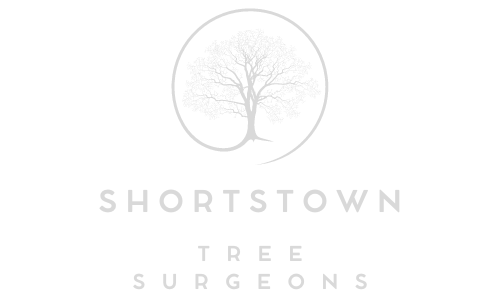Tree Crown Reduction: Understanding the Effects of Pruning on Tree Growth
Introduction: At Shortstown Tree Surgeons, we often receive inquiries about tree crown reduction and its impact on tree growth. This essential tree care technique can significantly influence a tree’s health, structure, and appearance. Understanding how pruning affects tree growth is crucial for making informed decisions about your landscape. In this blog post, we’ll explore the effects of tree crown reduction on growth and provide valuable insights for maintaining healthy trees.
What is Tree Crown Reduction?
Tree crown reduction is selectively removing branches and foliage from the upper portion of a tree. This practice helps reduce the tree’s overall size and weight, improves light penetration and air circulation, and mitigates potential hazards. Crown reduction is typically performed to enhance the tree’s structural integrity, aesthetic appeal, and overall health.
Effects of Pruning on Tree Growth
1. Stimulating New Growth
Pruning, particularly crown reduction, stimulates the production of new shoots and foliage. When a tree’s crown is reduced, the tree responds by redirecting energy to the remaining branches, promoting the growth of new shoots. This response is a natural defence mechanism that helps the tree recover from the loss of foliage. However, excessive pruning can lead to an overabundance of new growth, which may require additional management.
2. Balancing Tree Structure
Properly executed crown reduction helps balance the tree’s structure by reducing the weight of the upper branches. This balance is essential for preventing structural issues, such as splitting or leaning, from uneven growth. A well-balanced tree is more resilient to environmental stresses, such as strong winds and heavy snow.
3. Enhancing Light Penetration and Air Circulation
Reducing the crown allows more light to penetrate the inner branches and foliage, enhancing photosynthesis and overall tree health. Improved light penetration also benefits the understorey plants and lawn beneath the tree. Additionally, better air circulation reduces the risk of fungal infections and pest infestations, contributing to a healthier tree.
4. Redirecting Energy
Pruning redirects the tree’s energy from the removed branches to the remaining ones. This energy redistribution supports the growth of stronger, healthier branches. However, it is essential to avoid excessive pruning, as it can stress the tree and lead to a decline in health. A balanced approach to crown reduction ensures the tree retains enough foliage to sustain its energy needs.
5. Reducing the Risk of Damage
One of the primary reasons for crown reduction is to minimise the risk of damage from falling branches. Overgrown or heavy crowns can pose a hazard, especially during storms. By reducing the crown, you lower the risk of branch breakage and potential damage to property or injury to people.
Best Practices for Tree Crown Reduction
1. Assess the Tree’s Health
Before performing crown reduction, assessing the tree’s health and structural integrity is essential. Consulting a professional arborist, like those at Shortstown Tree Surgeons, ensures that the tree is suitable for crown reduction and that the procedure will not compromise its health.
2. Follow the 25% Rule
A general guideline for crown reduction is not to remove more than 25% of the tree’s crown in a single session. This approach helps minimise stress on the tree and reduces the risk of excessive new growth. If the tree requires a more substantial reduction, it is best to do so gradually over several years.
3. Use Proper Pruning Techniques
Ensure that cuts are made just outside the branch collar (the swollen area where the branch attaches to the trunk). Proper cuts promote faster healing and reduce the risk of disease or pest infestation. Avoid leaving stubs, as they can become entry points for pathogens.
4. Schedule Pruning at the Right Time
The best time for crown reduction is during the tree’s dormant season (late autumn to early spring). Pruning during this period minimises stress on the tree and allows it to heal before the growing season begins. However, some species may benefit from pruning at specific times, so consult a professional arborist for species-specific recommendations.
5. Monitor Post-Pruning Growth
After crown reduction, monitor the tree’s growth and health. Regular inspections help identify issues early, such as excessive new growth or signs of stress. Ongoing care, including watering, mulching, and fertilising, supports the tree’s recovery and overall health.
Conclusion: Tree crown reduction is vital for maintaining healthy, structurally sound trees. By understanding the effects of pruning on tree growth, you can make informed decisions that benefit your landscape.
Call us on: 01234 862 087
Click here to find out more about Shortstown Tree Surgeons
Click here to complete our contact form and see how we can help you with your tree’s needs.

